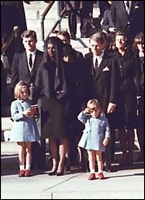Salute
Etymology
Middle English, from Latin salutare, from salut-, salus health, safety, greeting, from salvus safe, healthy — more at safe
- Date: 14th century
Definitions
- transitive verb
- 1 a : to address with expressions of kind wishes, courtesy, or honor
- b : to give a sign of respect, courtesy, or goodwill to : greet
- 2 : to become apparent to (one of the senses)
- 3 a : to honor (as a person, nation, or event) by a conventional military or naval ceremony
- b : to show respect and recognition to (a military superior) by assuming a prescribed position
- c : to express commendation of : praiseintransitive verb : to make a salute
Description
A salute (also called obeisance) is a gesture (often a finger gesture) or other action used to display respect. Salutes are primarily associated with armed forces, but other organizations also use salutes.
Origin
The exact origin of this salute has been lost in time. One theory is that it came from Roman soldiers' shading their eyes from the intense light that was pretended to shine from the eyes of their superiors. Another theory is that it came from when men-at-arms wore armor—a friendly approach would include holding the reins of the horse with the left hand while raising the visor of the helmet with the right, so that one would know they meant not to battle them. A third theory is that the salute, and the handshake, came from a way of showing that the right hand (the fighting hand) was not concealing a weapon. A combination of showing an empty right hand, palm outwards, which was then raised formally to a helmet to raise a visor would demonstrate non-aggressive intentions, and therefore respect. In Tudor times the helmet of a suit of armour was known as a sallet, a word very similar to the word salute.
The most widely accepted theory is that it evolved from the practice of men raising their hats in the presence of officers. Tipping one's hat on meeting a social superior was the normal civilian sign of respect at the time [1]. Repeated hat-raising was impractical if heavy helmets were worn, so the gesture was stylised to a mere hand movement. It was also common for individuals who did not wear hats to "tug their forelock" in imitation of the gesture of tipping the hat.
The naval salute, with the palm downwards originated because the palms of naval ratings, particularly deckhands, were often dirty through working with lines. Because it would be insulting to present a dirty palm to an officer, the palm was turned downwards. During the Napoleonic Wars, British crews saluted officers by touching a clenched fist to the brow.
